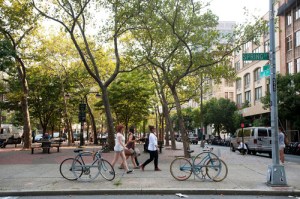New York’s Hudson Square neighborhood is getting a $27 million makeover thanks to funding from the New York City Economic Development Corporation, the New York City Council and matching funds from the Hudson Square Connection Business Improvement District.

The move reflects a shift from the center of the city’s printing industry into one clustered with 1,000 businesses in advertising, architecture, media and design, according to the announcement from Hudson Square Connection.
“The Hudson Square Connection’s streetscape improvement plan is the first major infrastructure project in the neighborhood in over 80 years and it will make Hudson Square an ideal neighborhood to live, work and play,” said Hudson Square Connection President Ellen Baer, in a statement.
Funding for the first phase of the plan includes $2 million from NYCEDC, $1.2 million from the City Council, a $3.2 million matching contribution from the Hudson Square Connection; and an additional $1.2 million from the Hudson Square Connection for the planting of 300 trees, for a grand $7.6 million.
The first phase will allow for a transformation of the park at Spring Street and Sixth Avenue, with new seating, lighting and trees; turning Spring Street, which connects Hudson Square to SoHo on the east and Hudson River Park on the west, into a “main street” with distinctive lighting; and installing “WalkNYC” pedestrian signs throughout the neighborhood.
Each new tree in the district will have expanded tree pits, tree guards and permeable pavement over structural soil, which will help retain storm water and mitigate sewer overflow after heavy rain. The first 30 trees will be planted by the end of 2013, with an additional 150 trees scheduled over the next 3 years.


